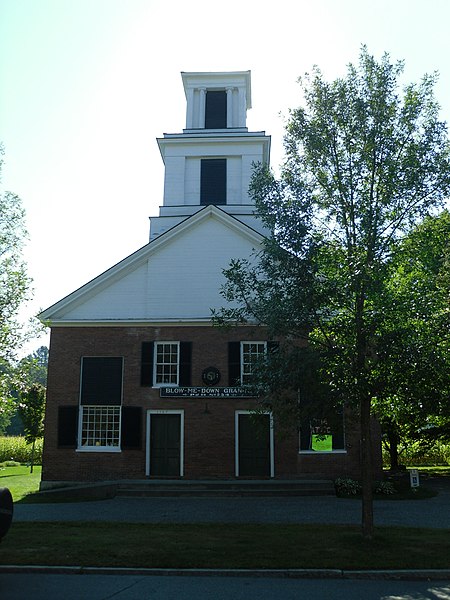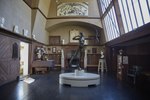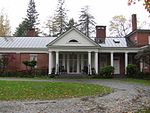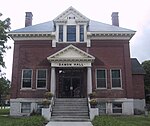Blow-Me-Down Grange
Buildings and structures in Sullivan County, New HampshireChurches completed in 1839Clubhouses on the National Register of Historic Places in New HampshireGrange buildings on the National Register of Historic PlacesGrange organizations and buildings in New Hampshire ... and 2 more
National Register of Historic Places in Sullivan County, New HampshirePlainfield, New Hampshire

The Blow-Me-Down Grange is a historic Grange hall at 1071 New Hampshire Route 12A in Plainfield, New Hampshire, United States. It is home to the Patrons of Husbandry Chapter 234. Built in 1839 as a church, it is architecturally significant for its Greek Revival features, and socially significant for the ongoing role of the Grange chapter in the local community. It was listed on the National Register of Historic Places in 2001.
Excerpt from the Wikipedia article Blow-Me-Down Grange (License: CC BY-SA 3.0, Authors, Images).Blow-Me-Down Grange
Route 12A,
Geographical coordinates (GPS) Address Website Nearby Places Show on map
Geographical coordinates (GPS)
| Latitude | Longitude |
|---|---|
| N 43.533611111111 ° | E -72.356666666667 ° |
Address
Plainfield Community Baptist Church
Route 12A 1094
03781
New Hampshire, United States
Open on Google Maps









